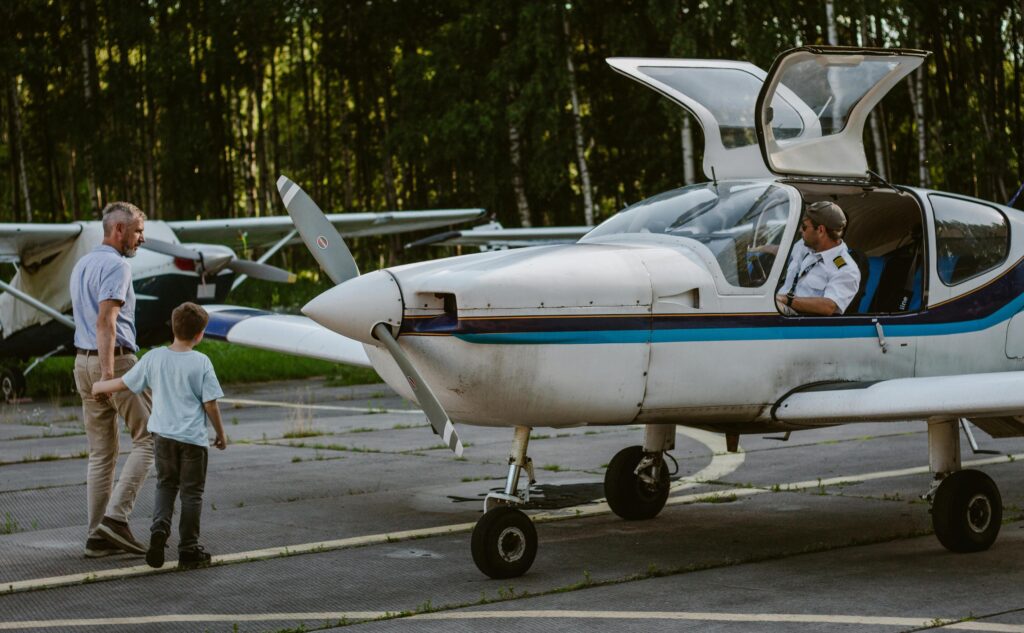
How Becoming a Pilot and Aircraft Owner Can Change Your Life – Part Two
Adding Ratings and Buying Your Very Own Aircraft is Only the Beginning of Your Journey as a Pilot and Aircraft Owner.
In the last blog post, we discussed the pains of modern travel. Whether you travel by airliner, public transport, or car, the experience can be frustrating. We also started to outline how becoming a pilot and aircraft owner can change your life. We covered the initial steps of pilot training and building experience. Now, let’s dive into adding ratings to your pilot license and buying your very own aircraft.
Get Additional Ratings
Adding ratings to your pilot licence/certificate opens up many opportunities. With a night rating, you can fly at night or take off before dawn for early meetings. A rating for instrument meteorological conditions (IMC) allows you to fly according to instrument flight rules (IFR). This means you can fly even when visibility is poor, except for the minimums required for take-off and landing.
Even if you don’t plan to use IMC privileges, flying IFR has benefits. Long-distance flights across different regions and countries are simpler under IFR. You follow published routes and procedures and communicate with air traffic controllers for clearances. An IFR rating is also valuable if weather conditions change unexpectedly during your flight.
Adding class and type ratings is another step forward. You may start with a single-engine piston rating but can expand to complex single engines, multi-engine pistons, turboprops, private jets, and even airliners.
Note: You cannot fly these aircraft commercially without a commercial pilot license or airline transport license. These are required if you want to fly cargo or passengers for compensation.
While additional ratings offer freedom, they also add complexity. Pilots should progress at their own pace. An IFR rating is advantageous but must be used competently. Similarly, complex and multi-engine aircraft require careful management. A retractable landing gear or additional engine adds complexity, especially if problems arise. Stick to turboprop engines if reliability is a concern as turboprop engines are more reliable than piston engines. Fly within the limits of the aircraft and your skills.
Become Proficient and Stay Current
Collecting ratings is less important than becoming proficient and staying current. Professional training and regular practice are crucial. Fly regularly and be honest with yourself. Plan your flights thoroughly and consider alternate routes. Stay self-critical and debrief after flights to evaluate your performance. Seek advice and further training when necessary. Regular flying maintains your skills and keeps the aircraft in good shape.
Get Your Very Own Aircraft
A vital part of becoming a pilot and aircraft owner is buying an aircraft. Before purchasing, identify your mission. What do you want to achieve? What is the average distance you need to cover? What is the terrain? Do you need to fly high to cross mountains? What weather conditions will you encounter, considering seasonal changes? How many people and how much baggage will you carry? These questions and more will be discussed in part three of this series. We’ll guide you through choosing the right aircraft for your needs and how to maintain it.
Join the Waitlist
Interested in becoming a pilot and aircraft owner? We’re excited to announce that we’re building the Pilot-Owner Academy to offer exclusive, advanced training and experiences. Join our pilot-owner academy waiting list for guidance through your aviation journey.
About Quest Aeronautics
Quest Aeronautics is a state-certified engineering office for aviation, dedicated to shaping the future of general aviation by providing innovative and cost-effective solutions to enhance aircraft performance and operations. With a focus on CS/FAR-23 and experimental/amateur-built (E/A-B) aircraft, Quest Aeronautics provides a range of services including flight testing, aircraft operations and maintenance consulting, high-quality aviation products, and tailored support for E/A-B projects. Collaborating with industry-leading partners, Quest Aeronautics is committed to delivering unparalleled support and expertise to individuals and organisations in the general aviation market.
About Author
Sebastian, the founder of Quest Aeronautics, is a driven and enthusiastic individual with a passion for aviation. Before delving into aviation, he gained valuable experience as a chemical process engineer and laboratory technician. Sebastian holds a Master of Science in Engineering and a commercial pilot licence, with several fixed-wing aircraft ratings under his belt. He has also completed an introduction course for fixed-wing performance and flying qualities flight testing at the National Test Pilot School in Mojave, CA and is compliance verification engineer for flight.
